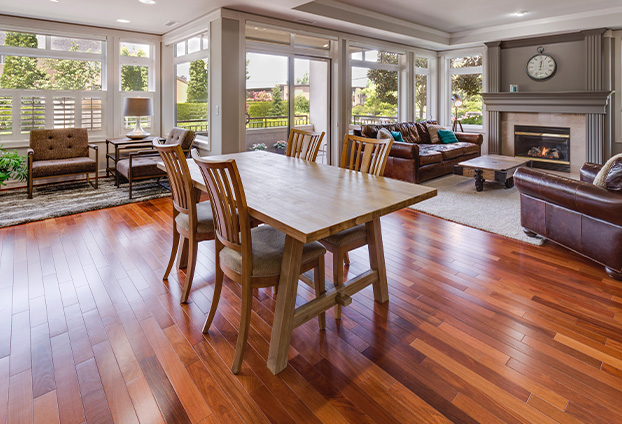Is Self-Sanitizing Vinyl Flooring Worth the Investment? A Cost vs. Benefit Breakdown
Introduction: Is Self-Sanitizing Vinyl Flooring Worth It? Are you thinking about upgrading to self-sanitizing vinyl flooring for your home? For...
Home » News
Check out the latest news and annoucements. Find out what you need to know, tips-and-tricks, the popular choice and much more. We also share basic knowledge that you need to know on flooring.


Check out the latest news and annoucements. Find out what you need to know, tips-and-tricks, the popular choice and much more. We also share basic knowledge that you need to know on flooring.
Introduction: Is Self-Sanitizing Vinyl Flooring Worth It? Are you thinking about upgrading to self-sanitizing vinyl flooring for your home? For...
Babies spend a lot of time on the floor. They crawl, play, and sometimes nap there. So, it’s very important...
If you have pets at home, you know how messy and active they can be. From scratching floors and spilling...
Why Your Flooring Choice Matters Choosing the right flooring is important for every home. Today, many families compare luxury vinyl...
Living in Singapore means dealing with hot and wet weather all year. This can cause problems in your home, especially...
Which Floor Should You Choose? Luxury Vinyl Flooring or Real Wood Flooring When you’re searching for the perfect new floor,...
Why Keeping Your Luxury Vinyl Flooring Clean Matters Luxury vinyl flooring is popular for homes because it looks great and...
Why Choosing Low-VOC Vinyl Flooring Matters for a Healthy Home Are you looking for a way to make your home...
Are allergies and constant sneezing making life at home difficult? Choosing the right flooring can make a big difference, especially...
One of the products that’s really developed over the last two or three years is water-resistant laminate. Laminate in its original state performed very poorly in high-traffic areas. However, today, I would definitely recommend luxury laminate and vinyl. It’s scratch-resistant (hardwood is not), moisture-resistant and looks like incredibly realistic wood or tile. It’s very durable and will last a long time.
There are multiple options for any of these scenarios. The best way to figure out the flooring that will fit your lifestyle is to come in to the store and chat with one of our flooring consultants. They have vast experience with all types of flooring and will be able to recommend exactly what fits your specific needs—whether it be budget, kids, pets, or more.
Most people want a floor that’s going to hold up for a long time, which is why buyers have steered away from carpeting (which needs to be replaced every 5-7 years). Instead they’re choosing hardwood, but most don’t know how to properly clean or maintain it. To help extend the lifespan of our customers’ hardwood flooring, we created a service called Hardwood Genius. It’s a cleaning technique that scrubs off surface dirt and scrapes out anything stuck in the grooves of the wood, before we add a revitalization coat to enhance the grain and overall appearance.
Nice medium brown hardwoods are classic. Look for a wood that has a little brown and a little grain in it. A blend of the two is easy to decorate with and should match your existing finishes. It also helps when you’re going to sell your house—buyers appreciate classic hardwood looks with colorations that are easy to decorate with.